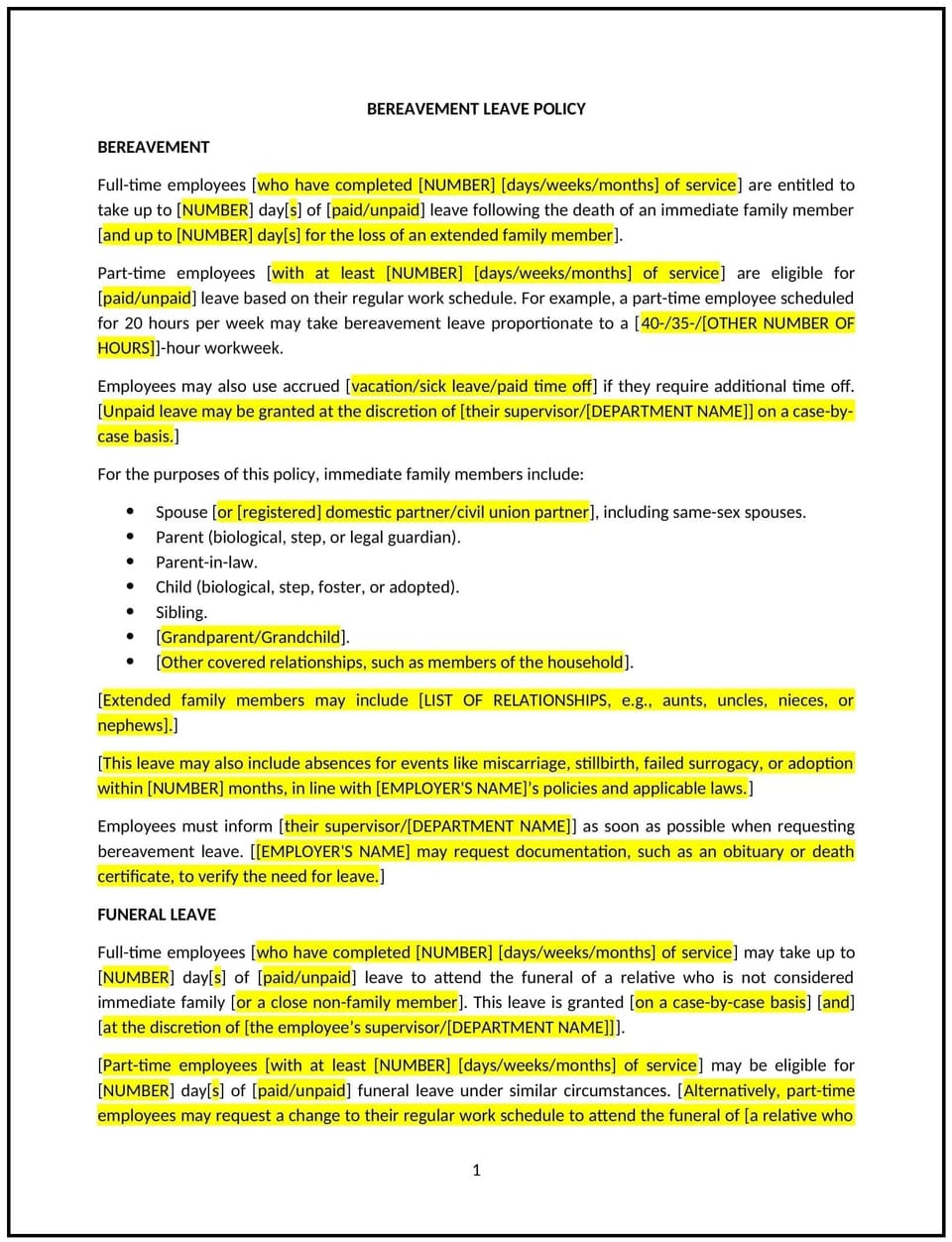Bereavement leave policy (Utah): Free template

Bereavement leave policy (Utah)
This bereavement leave policy is designed to help Utah businesses provide compassionate support to employees who experience the loss of a loved one. It outlines the types of leave available, eligibility criteria, and procedures for requesting and approving bereavement leave.
By adopting this policy, businesses can demonstrate empathy, support employee well-being, and align with general best practices for managing leave requests.
How to use this bereavement leave policy (Utah)
- Define eligibility: Specify which employees are eligible for bereavement leave, such as full-time or part-time staff.
- Outline leave duration: Provide guidelines for the amount of leave granted, typically 3-5 days for immediate family members.
- Specify covered relationships: Define which relationships qualify for bereavement leave, such as spouses, children, or parents.
- Establish request procedures: Outline the process for requesting leave, including required documentation.
- Communicate expectations: Clarify whether bereavement leave is paid or unpaid and any impact on other leave balances.
- Promote flexibility: Allow for additional leave or flexible arrangements in exceptional circumstances.
- Review and update: Regularly assess the policy to ensure it meets employee needs and business requirements.
Benefits of using this bereavement leave policy (Utah)
This policy offers several advantages for Utah businesses:
- Supports employee well-being: Demonstrates compassion and understanding during difficult times.
- Enhances morale: Builds trust and loyalty by showing employees they are valued.
- Reduces absenteeism: Provides structured leave, minimizing unplanned absences.
- Aligns with best practices: Offers a competitive benefit that attracts and retains talent.
- Promotes productivity: Helps employees return to work focused and motivated after taking leave.
Tips for using this bereavement leave policy (Utah)
- Communicate the policy: Share the policy during onboarding and include it in the employee handbook.
- Train managers: Educate supervisors on handling bereavement leave requests with sensitivity.
- Be flexible: Consider individual circumstances and allow for additional leave if needed.
- Maintain confidentiality: Handle leave requests discreetly to protect employee privacy.
- Review regularly: Assess the policy annually to ensure it remains effective and supportive.
Q: How does this policy benefit businesses?
A: By supporting employees during difficult times, businesses can enhance morale, reduce turnover, and maintain productivity.
Q: What types of relationships are typically covered under this policy?
A: Immediate family members, such as spouses, children, and parents, are usually covered, but businesses can expand the list as needed.
Q: How does this policy help businesses manage leave requests?
A: By providing clear guidelines, businesses can handle leave requests consistently and fairly.
Q: Should bereavement leave be paid or unpaid?
A: This depends on the business’s resources and policies. Paid leave is more supportive but may not be feasible for all businesses.
Q: How often should businesses review this policy?
A: Businesses should review the policy annually or as needed to ensure it meets employee needs and business goals.
This article contains general legal information and does not contain legal advice. Cobrief is not a law firm or a substitute for an attorney or law firm. The law is complex and changes often. For legal advice, please ask a lawyer.


